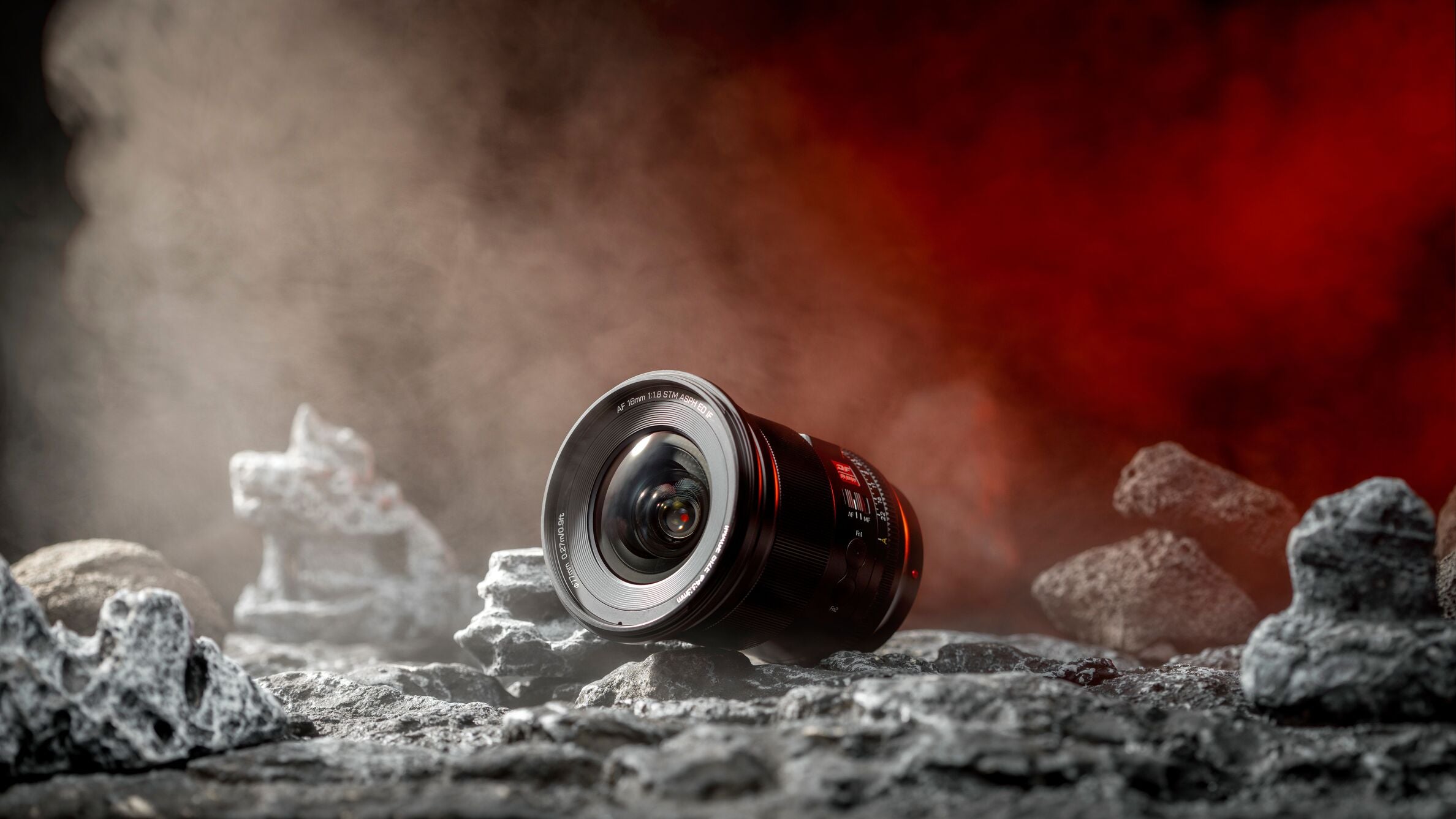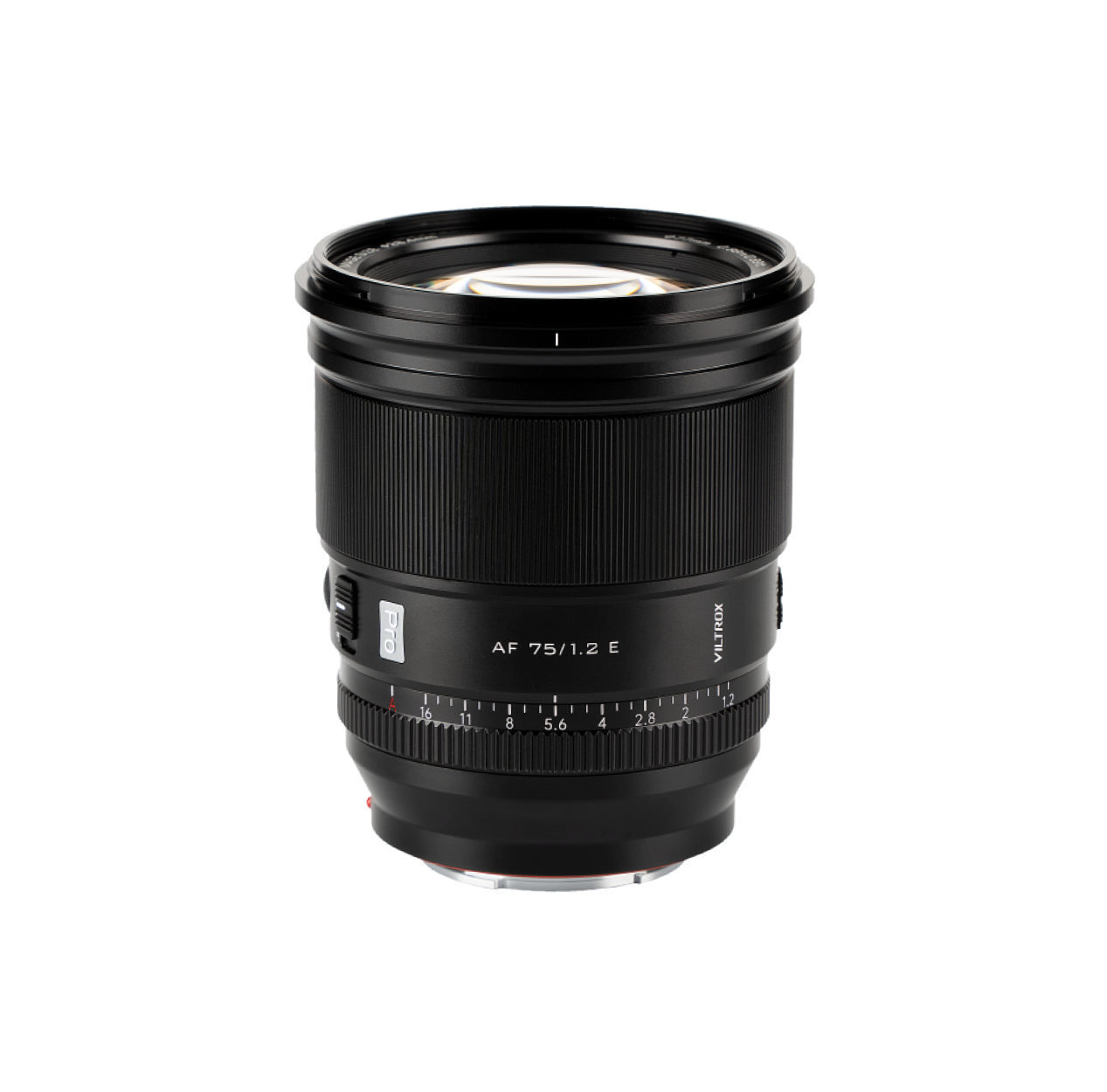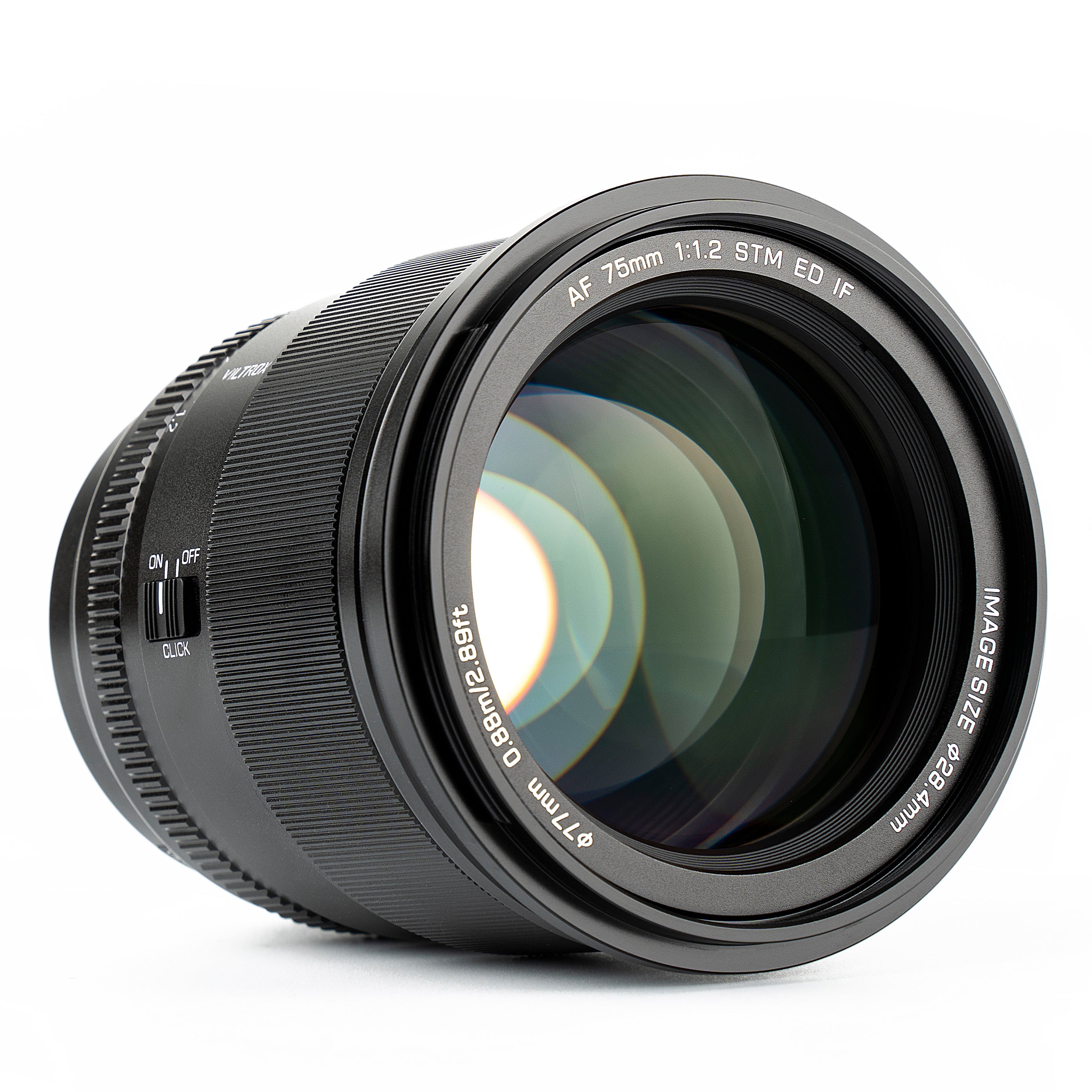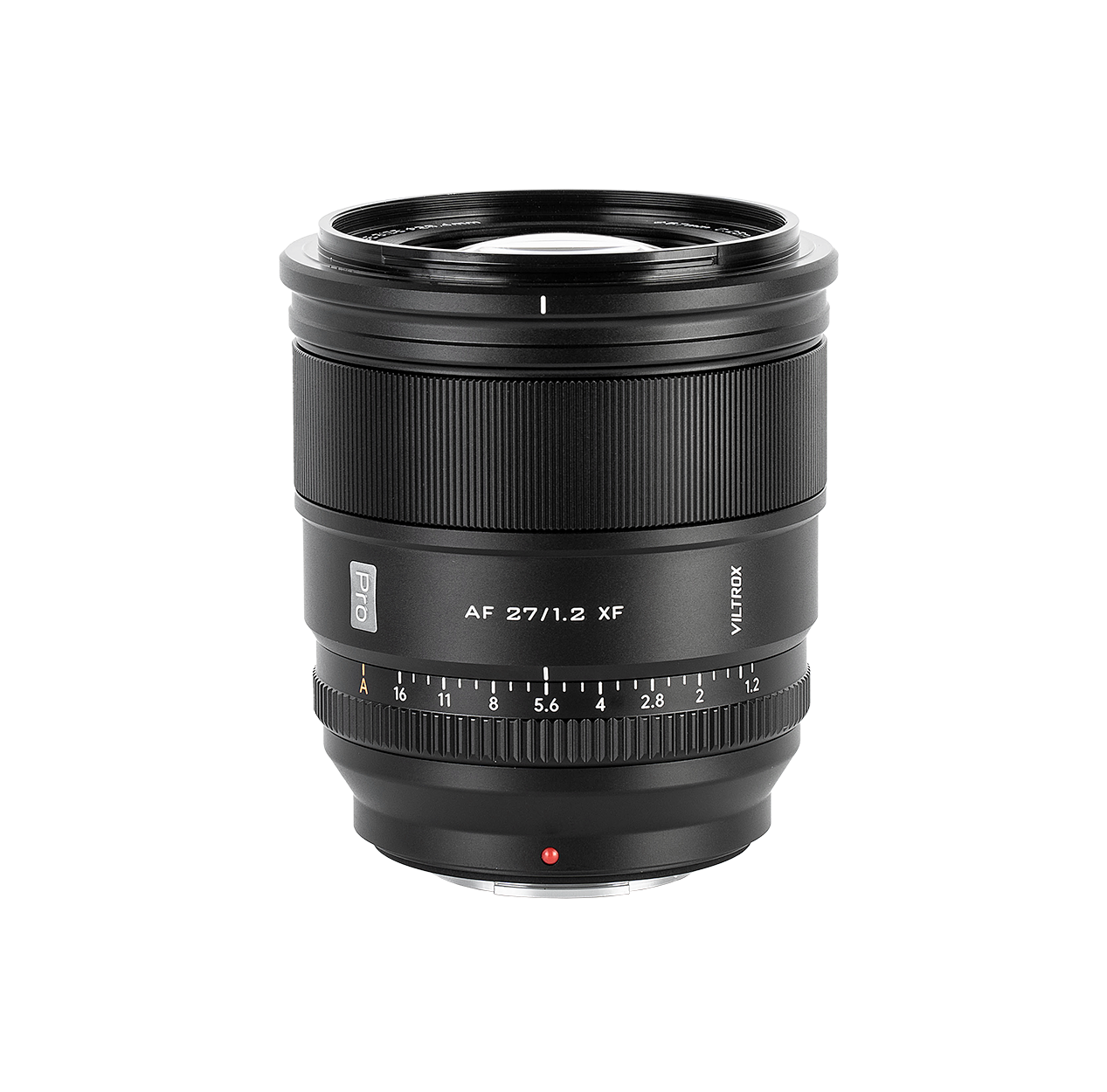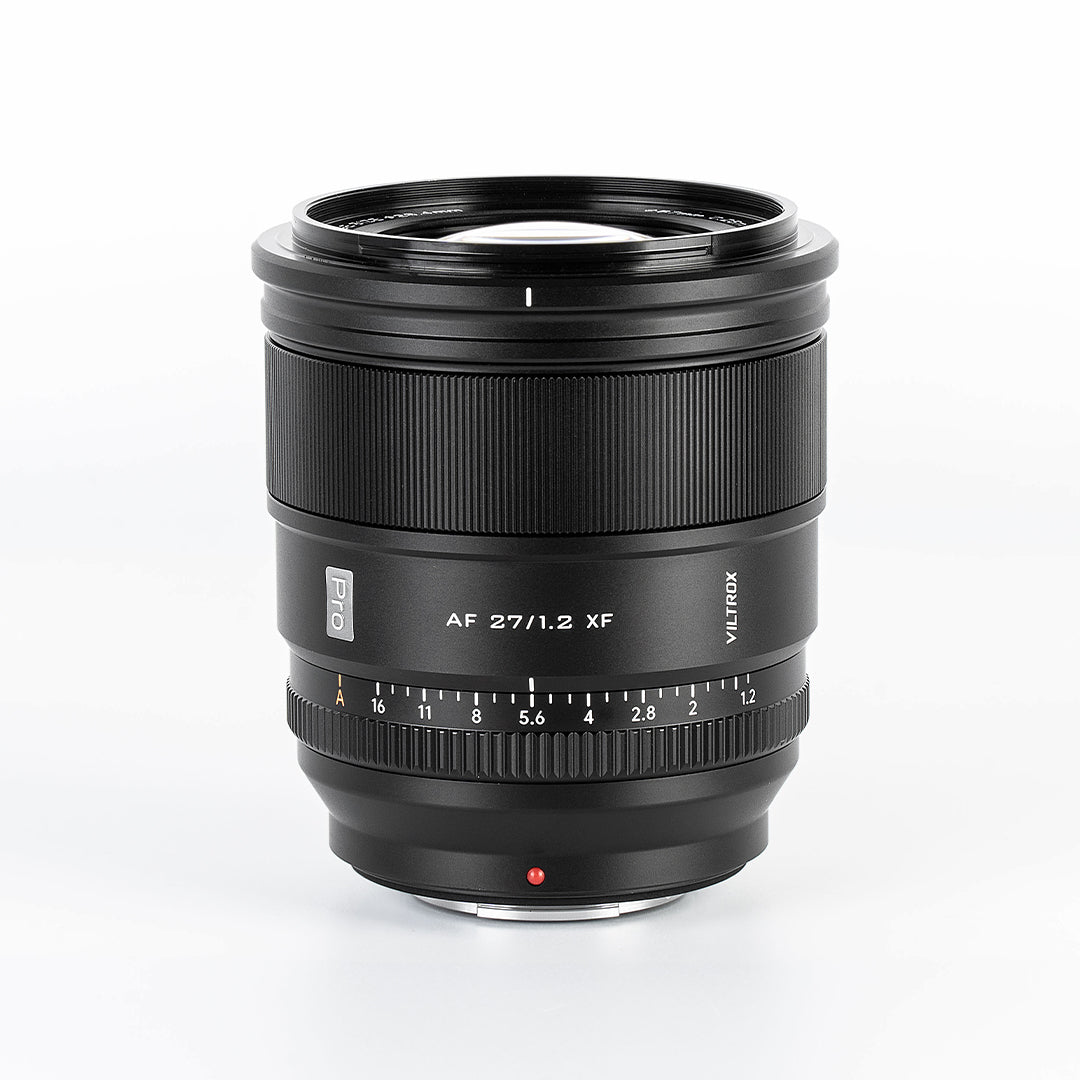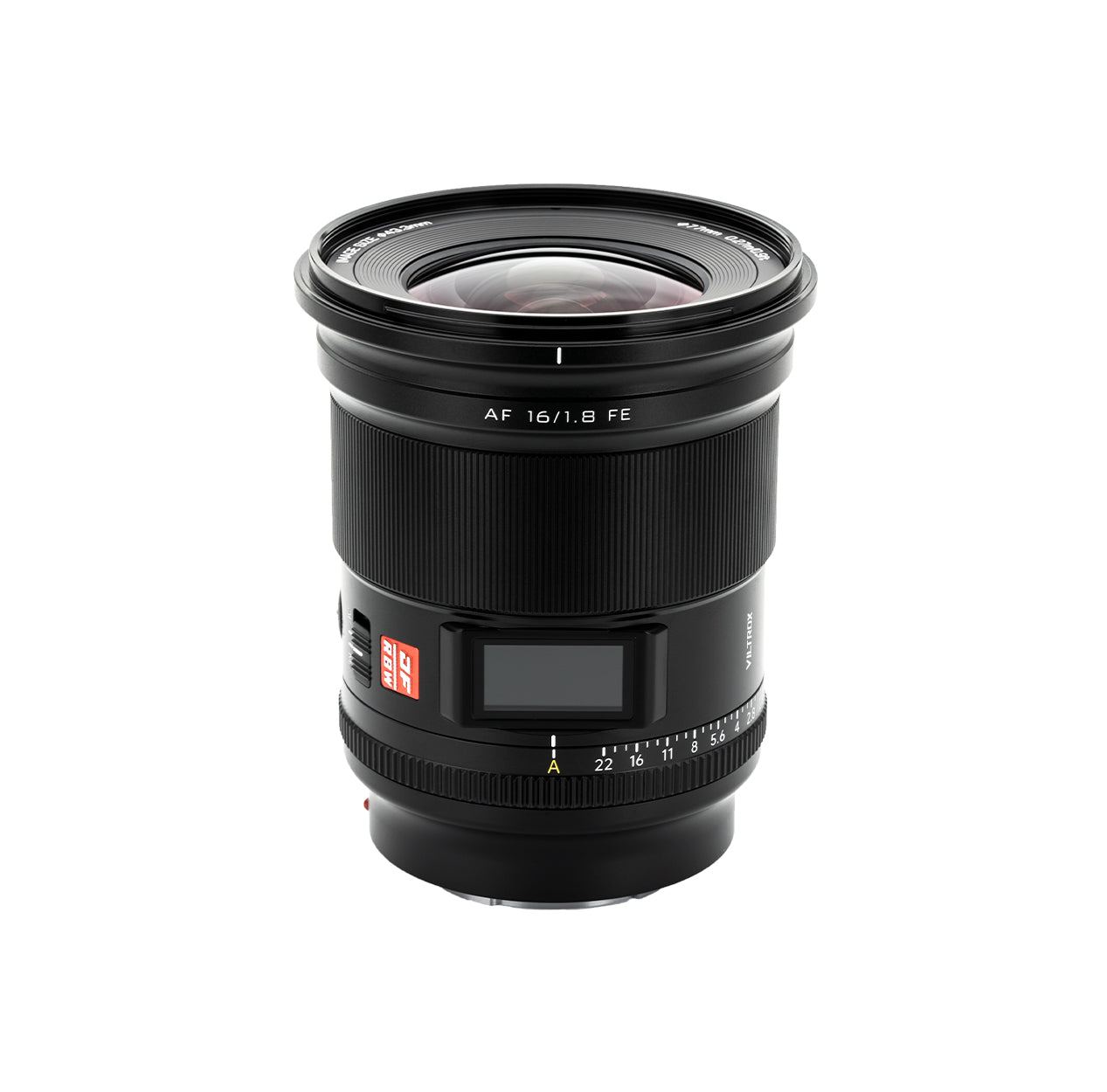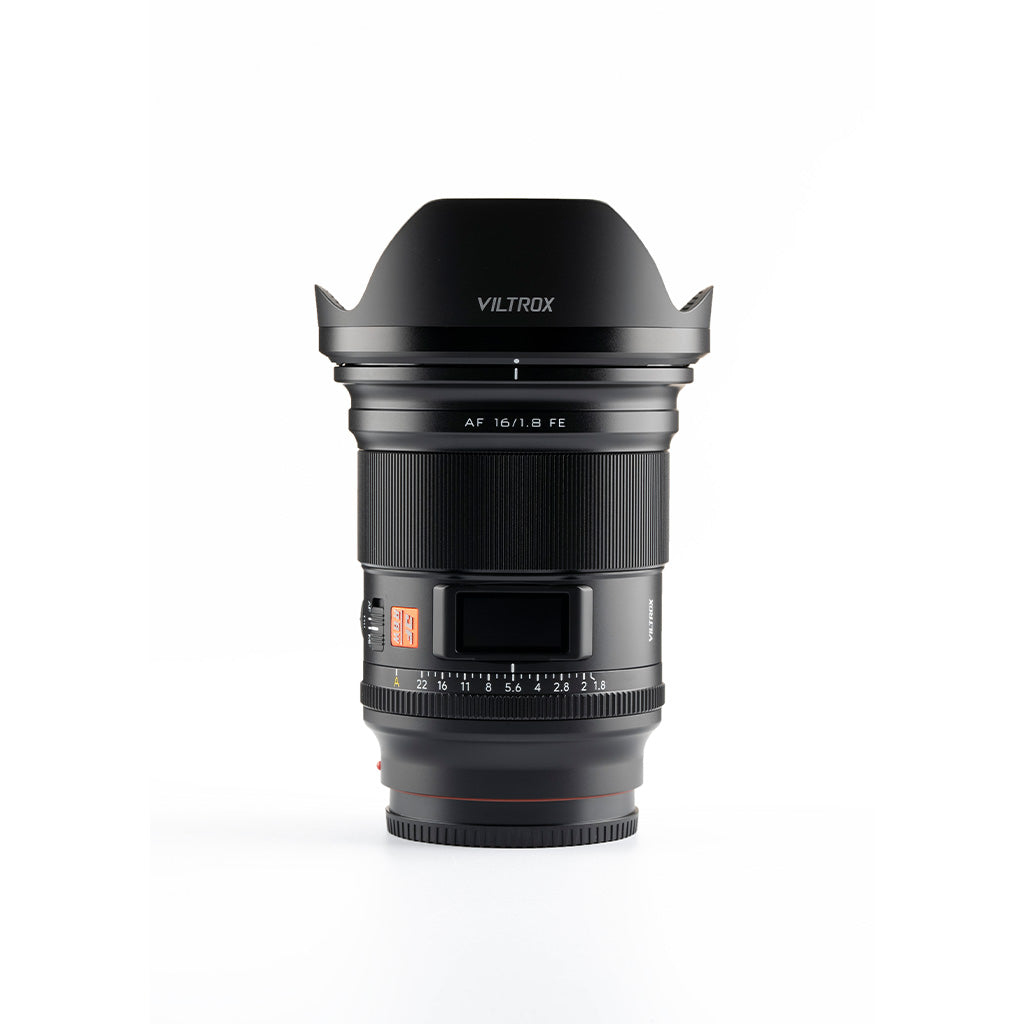Introduction:
Experience with the Viltrox AF 16mm F1.8 FE, and by the way preview the next heavyweight lens.
What do you expect from Viltrox 16mm F1.8 lens?
Affordability? Functionality? Compactness? Portability? Durability? I think that while a thousand people may not have a thousand answers, but there will definitely be plenty of choices for everyone.
When the Viltrox AF 16mm F1.8 FE came into my hands, and after using it for several months, it did meet most of my expectations.
This lens also refreshed my understanding of the quality, function and design of domestic lenses. Whether this sentence is exaggerated, let us read the following article together.
What is it?
AF 16mm F1.8 FE is the latest masterpiece of Viltrox. Although it does not belong to the top Pro series of Viltrox, in my opinion, its specifications and configuration have reached the Pro level among domestic lenses.
The appearance of this lens also shows the ambition and strength of this domestic imaging brand - full frame plus 16mm Ultra wide-angle plus F1.8 large aperture. The optical structure of 12 groups of 15 elements, 3 aspherical lenses, 4 ED lenses and high-definition nano-coating make this lens very sincere in terms of optical materials.

There are not many similar lenses on the market. Taking Sony's micro-single system as a reference, the competitors I can think of are Sony FE 14mm F1.8 GM (hereinafter referred to as 14GM) and the latest Sigma 14mm F1.4 DG DN | Art (hereinafter referred to as 14Art).
To be honest, as a lens that will pay more attention to cost performance, Viltrox is positioned lower than these two "giants" in the ultra-wide-angle world.

This is not to say that the Viltrox 16mm F1.8 is not good, but that we must first recognize the positioning before we can talk about many things. What's more, sometimes a slightly lower positioning is not a bad thing.
For example, in terms of price, the Viltrox AF 16mm F1.8 FE with a gear of $500 is less than half that of Sony 14GM and Sigma 14Art. For most people, spending nearly $1,500 to buy a fixed-focus lens that is not necessary, but if you spend more than $500 to try it out, the wallet will obviously feel better.
In addition to being more budget-friendly, the Viltrox AF 16mm F1.8 FE is also an "unbulb-like" ultra-wide-angle lens. This means it can directly accommodate a 77mm filter. This convenience eliminates the need for a larger front filter holder like those used on bulbous lenses or using filter slots at the mount, which would require removing the lens each time a filter is changed and thereby increasing the risk of dust accumulation.

However, Viltrox is obviously not satisfied with this "preferential" feature. I have also seen the exploration of this domestic company in the control experience of AF 16mm F1.8 FE.
This lens has the same Click switch as the Sony original lens, which can be used to switch the infinite aperture, which is convenient for video shooting.
On the left side of the lens, there are also two Fn buttons. Among them, Fn1 can be set through the Sony body, while Fn2 can be used to set the A/B point switch on the focal length.
What is the use of this function? In theory, this is optimized for video shooting, allowing you to quickly switch focus between two objects.
For me, the significance of this function for starry sky photography cannot be ignored.
Because anyone who has taken pictures of the starry sky knows that the infinity mark on the lens does not necessarily guarantee the best star point effect. It is often necessary to adjust back and forth (usually closer) to be the most suitable, that is, the stars will be A point, not a blurry little spot of light.

But if you focus on the star point every time, it will increase the workload and the probability of misalignment.
Now, when I shoot the starry sky for the first time, I can first confirm the focal length of the best star point by zooming in on the focus area, and then set it to point B of Fn2. Then in every subsequent shooting, no need to refocus, you can directly press Fn2 to switch the focus to B --the star point position.
This makes it possible to focus on the starry sky with one click. This function can play a key role when it is necessary to shoot different foreground objects and then take background starry sky for synthesis.
This design is very novel, and the interface it relies on is also worth mentioning. That's that giant information panel on the lens. If you compare the lens information panels of Nikon, Zeiss and Canon in the past, you will find that the size of Viltrox is larger and the display content is more abundant.

For photographers, I especially like the depth of field scale above. After all, the focal length and aperture of each lens are different. In the past, judging the depth of field was either calculated by the app or roughly estimated. Now that there are clear instructions on the lens, it is much more convenient.
To sum up, although my articles are usually based on pictures, this time Viltrox AF 16mm F1.8 FE innovation in design and interaction made me feel deeply——This is the Viltrox lens I want to see, and it is also the bold exploration and attempt of video products that I want to see.
How Fun is it?
"Getting better" is not an exaggeration to describe my whole shooting with the 16mm F1.8, because I took it to Hong Kong, Niubei Mountain and the teamLab light show, which made it stand the test of professional subjects.
But this lens actually has the potential for many more capabilities. Below, I'll show you something that might be beyond your expectations.
1. Ultra-wide angle can also shoot daily life?
—— Basic performance test: AF and sharpness
Contrary to what many people may think, my first challenge when using the Viltrox AF 16mm F1.8 FE is not to use it to shoot starry sky.
Shooting what? The following scene:

This is the scene where I play with my baby, what can it explain? In fact, I am very concerned about the glare and ghosting problems that often appear in domestic lenses-this is one of the biggest shortcomings of domestic lenses.
And in the photo above, despite the extremely bright searchlights in the background, you can hardly see any flare or ghosting.
But that's not all, let's look at the next photo:

As an autofocus lens, whether it can match the body's subject tracking focus is very critical. In this picture of my baby running sideways, the Viltrox AF 16mm F1.8 FE accurately caught up.
Don't think that the ultra-wide-angle has a large depth of field, and it's okay to be misaligned, and don't think that you can shrink the aperture slightly to expand the depth of field. Because for shooting at night, the shutter speed still needs to be guaranteed, and the sensitivity should be as low as possible. (especially on Sony α7R IV).
At this time, both F1.8 full opening and precise focusing are required. Because of a slight misalignment, it will be very obvious in the full-frame 61-megapixel photo.
But the challenge of horizontal focusing is only elementary, and the difficulty is vertical, that is, the little baby running towards the camera:

Partially zoom in on the face to see:

Perfect focus.
To be honest, This was a bit of a surprise to me. What surprised me even more is that the sharpness at the focus point is also very good and the details of hair and clothes can be seen well.
In fact, when shooting with this lens, I usually don't have to worry about anything wrong with wide open at F1.8, nor do I have to think about the conservative rule of the old "Shrinking the aperture improves sharpness".
You can see:


The fur on the cat's head is visible, And it is still located off the center of the frame.
In fact, for daily subjects, the only problem with this lens at full aperture is that the four corners lose light (vignetting) is obvious. the specification of 16mm F1.8 plus the non-bulb lens design itself is not good for the brightness of the four corners.
But this problem is not so serious, because I think the photo with a little vignetting is acceptable most of the time . And in some scenes, it can even slightly enhance the atmosphere of the picture.

In addition, this lens is also very good for the control of distortion. I did not test the target board, but only judged by the straight lines in daily subjects. It can be seen that these lines are still straight and there is no bending caused by distortion.

Large aperture, high sharpness, low distortion, low glare ghosting... When the results of these tortures on the basic performance of a lens are presented to me, as a photographer, the conclusion I draw is ---- You can rest assured to use this lens to shoot most of the subjects in your daily life.

These few warm-up photos before the launch of 16mm F1.8 were all taken with the aperture wide open. They also show that this lens can actually be used for many daily shootings, not just a "starry Lens" or "Scenic Lens".
These test shots gave me a lot of confidence, makes me interested to shoot more photos with Viltrox AF 16mm F1.8 FE. That's the rest of the story.
2. Challenge the city night scene
—— Sunstar and No Tripod
I recently found that I prefer to take a stroll alone, just like the last night of shooting outside Hong Kong. After finishing all the planned schedules, I always felt that something was missing, so I put my camera on my back and went out for a walk steps.
So on an overpass where I didn't remember the exact location, I put the camera on the railing, and pressed the shutter on the traffic below and the buildings in the distance:

The window of the hotel next to it seems to be a mosaic of light, and the trajectory of the traffic flow just left the words of Nathan Road in the middle. The Viltrox 16mm F1.8 does a good job in this photo, even with the aperture nearly wide open at F2.0, details from the center to the edges of the frame are very clear and sharp (0.6 sec shutter, ISO64).
The other photo was taken with the camera on a fire hydrant on the side of the street. In order to obtain the sunstar effect, the aperture was closed to F10 (shutter 1.3 seconds, ISO800).

As expected, there are no flare or ghosting issues in this photo either. It's just that I think the sunstar of the street lights in the upper right corner of the picture seems to be a little less, not as beautiful as the distant view. But after thinking about it later, this may also be because it is closer to the lens and has a larger volume, so it has changed from a point light source that is prone to starbursts to a "surface" light source that is less prone to starbursts.
Anyway, these two long-exposure photos of night scenes make me feel very comfortable walking in the city with this lightweight lens. So then I went to the K11 Musea art mall that I visited during the day, to see the atrium where the light is a bit messy during the day and it is not easy to shoot:

ISO400, F1.8, 1/25 second are the shooting parameters of this photo. You can see that the corners of the frame are well imaged, even at the wide open aperture of F1.8. For this kind of scene where the light is weakened after the store is closed, the combination of "ultra wide-angle + large aperture" exerts great power.
This also makes me think that for such difficult scenes, the F1.8 fixed-focus large-aperture lens has more advantages than the F2.8 zoom lens. You must know that if the maximum aperture is F2.8, then the shutter speed may only be 1/10 second, or the sensitivity needs to be increased to 800. For high-pixel bodies, there will be image noise problems.
I also encountered and photographed a similar scene when I was walking in Shanghai:

There are many interesting buildings and lights in the west bank at night, which is actually quite suitable for night portraits, but I don’t have a model. The aperture of the photo above is F5.6, due to I deliberately found an angle that can block the light, the sunstar are also exposed, which looks better.
The picture below is a 1/13 second hand-held shooting with a full aperture of F1.8. The dim and changing colors of the lights bring a completely different visual effect to the architectural structure from the daytime, and also reflect the colorful charm of the city at night.

So with a lens like 16mm F1.8, when you walk around the city, you will find that you don’t need to carry a troublesome tripod, and you can handle most scenes and creativities.
3.Galaxy starry sky and teamLab light show
—— Star restoration and complex lighting scenes
Finally, it’s time to talk about shooting the starry sky. The reason why this article took so long to complete is because I have seen the works of starry sky experts like photographer Zhou You with this lens. But I always feel that if I want to write an article, I should take a picture of myself to feel the feeling.
Later, I also waited for such an opportunity. The following photo is the first starry sky photo I took with this lens. It is not perfect, but it is a good example of the quality of this lens:


When the F1.8 aperture is fully opened, there is no problem in restoring the star point in the center of the screen. As for the corners of the screen, if you only zoom in generally, the star point looks good, but if you zoom in a lot, you can see a slight coma, that is, the star point is deformed.
I think this is also the biggest gap between this $500 lens and the 14GM which costs $1,500. But I don’t know what you think of the effect of the picture above, anyway, for me, a non-professional photographer, it’s already very good.
In other words, if it is just satisfy my curiosity and take pictures as a hobby, then I can completely accept this effect, and even non-ultra-large format output should not be a big problem.
Of course, I didn’t just take one photo and leave, but tried to combine it with the ground scenery and took the following two photos of the starry sky.


However, due to the busy schedule recently, I haven’t used PS and other software to edit the pictures. The above two photos are just the result of a little exposure bracketing after I imported the photos into the mobile phone (because the tent on the ground is too bright) .
Looking at these two photos, I believe you will feel very similar to me, for photographers who just want to try starry sky shooting, the starry sky quality of this lens is completely acceptable.
As for professional photographers, they probably won’t pay attention to and use this lens, after all, there are more professional options out there (there is nothing that can’t be solved by spending money, hahaha~).
Not long ago, I took my baby to see the teamLab in Beijing, which also showed the significance of the wide-angle large aperture lens: shooting people and light shows in low-light environments without the help of a tripod.


The multiple mirror effect shot in a small space like the above is that only an ultra-wide-angle lens can obtain the greatest visual impact. At the same time, only the F1.8 aperture can guarantee sufficient shutter speed and not too high ISO, so as to ensure the purity of the picture.
As for the big scenes without people, the 16mm F1.8 also makes me very comfortable to shoot:



The high sharpness at wide aperture of this lens also gives me more confidence, allowing me to have greater freedom in framing and capturing scenes.
Summarize
Q: If you ask me if the Viltrox AF 16mm F1.8 FE is a perfect lens?
A: I will tell you the truth: It's still a bit far from the pinnacle of ultra-wide angles like the Sony 14GM, especially in the control of vignetting and coma (corner star point restoration).
However, in my opinion, it has achieved the best level that the current domestic lens can achieve, and it is good enough for daily non-professional use.

Q: So, is it a lens worth buying?
A: I think the answer is absolutely YES. Of course, if you don't like Ultra wide-angle, then you don't have to look at this category at all. But if you are interested in Ultra wide-angle large aperture, architecture, sports, Hoshino and Vlog video topics, and you don’t have such a high budget. A 16mm F1.8 of ¥3499 is obviously "spend less money,do more thing".
Q: if zoom lenses such as 16-35mm F2.8 or 14-24mm F2.8 are included in the comparison, is Viltrox still worth recommending?
A: In my opinion, these are two completely different products. After all, the difference in aperture is more than one stop, which will have a great impact on exposure. What's more, the size of the zoom lens itself will be larger, and many of them are bulb lens, while the weight of Viltrox AF 16mm F1.8 FE is 550g, and it has a flat mouth that can be directly installed with filters. It has advantages in flexibility and portability (again, Sony's 14GM is only 460g).
In one sentence, I recommend this lens - it can really do a lot of things and capture a variety of different subjects.
Looking Ahead: Lens Mount Discussion
At present, Viltrox AF 16mm F1.8 is launched with Sony E-mount version. In fact, this is an extremely competitive system. There is the original 14GM in the front and Sigma 14mm F1.4 Art in the back, all are user-favorite lenses.
But looking at similar products with other mounts, Nikon Z mount does not currently have a Ultra wide-angle lens with a large aperture similar to the 16mm F1.8 or Sony 14GM. So if Viltrox release the Z-mount version as soon as possible, it should be the choice of many Nikon mirrorless camera users. whether Z9 or Z8, or other Z-mount mirrorless cameras, shooting the starry sky is very good.
In addition, regarding the L-mount alliance, Panasonic currently has an 18mm F1.8 that costs nearly $1,000, which is lighter and smaller than Viltrox, but the focal length is not as wide as Viltros. The L-mount version of Sigma 14mm F1.4 Art is more expensive (nearly $1,600), which Leave a certain room for development for Viltrox.
The slightly embarrassing thing is Canon... forget it.
In short, it is still the same sentence, look forward to the rise of domestic lenses, and look forward to more lenses like Viltrox AF 16mm F1.8 appearing!
Article Source: ToolFun

